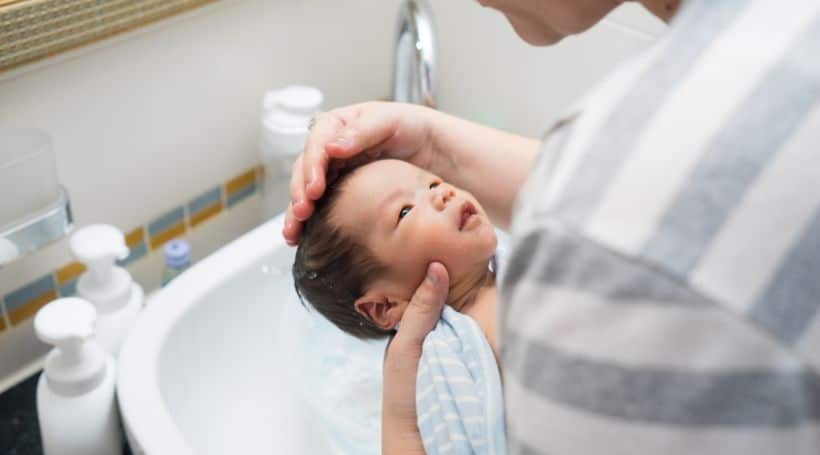Last Updated on January 1, 2025
Your baby has arrived! It’s such a thrilling time! Even though your newborn relies on you entirely, they possess more capabilities than you might think. Nevertheless, it’s essential to grasp the fundamentals of infant hygiene to minimize germ transmission and safeguard both baby and caregiver health.
Genitals
- When cleaning your infant’s genital area, start from front to back, delicately spreading the outer lips. There might be a white substance present, which serves as a protective barrier against bacteria, so leave it be. If there’s any stool between the inner lips, gently cleanse it away, ensuring not to penetrate the vaginal opening.
- For boys, wash the penis and scrotum with mild soap and water. As the foreskin is typically still attached before age 3, gently retract it to clean any whitish discharge (smegma) from the tip. Always return the foreskin to its original position afterward and avoid forcing it back to clean underneath.
• Always change your baby’s diaper promptly after it gets wet or soiled to prevent irritation. Apply unscented zinc oxide ointment if needed when using Cuties diapers.
• Minimize the use of disposable wet wipes to reduce the risk of irritation. Choose unscented wipes and reserve them for situations where soap and water aren’t accessible.
• Avoid talcum powder (baby powder) as it can lead to respiratory issues, despite its historical use for drying babies’ skin.
Baths
Bathing presents a lovely chance to connect with your little one through fun and physical closeness. If you stay relaxed and assured, your baby will feel the same.
• No need for daily baths. Generally, two or three times a week is plenty, ensuring daily cleaning of areas prone to getting dirty (like genitals, bottom, and hands). Optionally, a quick wipe with a cloth or bath mitt daily is also fine.
• Pick a calm moment for bath time, like after a feed or when they’ve just woken up from a nap.
Throughout the 9-month stay in the womb, your little one’s habitat was primarily water. Consequently, it’s not surprising that infants often find comfort in bath time!
• Ensure the water temperature is just right, neither too hot nor too cold, by testing it with your elbow or wrist to prevent any risk of burns. Aim for a temperature around 37°C, mirroring the body’s average warmth.
• If your baby still has vernix on their skin, let it be. This protective coating will naturally absorb into their skin within days of birth.
• Start by gently washing your baby’s face and neck, then move on to the folds under their arms and behind their ears, saving the genital area and bottom for last.
• Avoid excessive soap use during your newborn’s baths, except for essential areas like their bum, genitals, and hands. Use a small quantity of gentle, unscented soap as necessary.
• After bathing, gently pat your baby dry instead of rubbing. Ensure thorough drying of their neck folds, armpits, behind their ears, and inner thighs (groin) to prevent moisture accumulation and skin irritation.
• To prevent dry skin or eczema, give your baby brief lukewarm baths daily, pat them dry, and apply unscented moisturizer.
• Supervise closely during baths as drowning can occur rapidly, even in shallow water.
• Avoid scented products, bubble baths, and adult soaps as they may irritate sensitive skin and mucous membranes.
Nose
Regularly rinsing your baby’s nasal passages with a saline solution offers multiple advantages. It aids in mucus removal, maintains nasal moisture, and diminishes congestion by leveraging the salt content. Additionally, it serves as a preventative measure against nosebleeds, colds, and ear infections.
• Routinely clear your infant’s nasal passages using a saline solution, accessible at pharmacies or easily prepared at home. Expect mucus to discharge from both nostrils or even the mouth.
• Optimal irrigation frequency varies with the seasons; aim for once daily during summer and 2 to 3 times daily in winter. Increase frequency (3 to 6 times daily) during congestion or colds. Utilize diaper changes as opportune moments for nasal cleansing.
• For infants under 6 months, position them on their side during nasal irrigation. Administer saline solution (3 to 5 ml) swiftly into the upper nostril using a syringe, then switch sides and repeat. Children over 6 months can sit up for the procedure, requiring 5 to 10 ml of saline solution. Refer to our article on nasal care (link provided in French) for detailed instructions.
• When mucus obstructs your baby’s nasal passages, irrigate before feeding, sleeping, or bathing. A prolonged bath or shower with your baby may also help alleviate congestion by leveraging water and steam.

